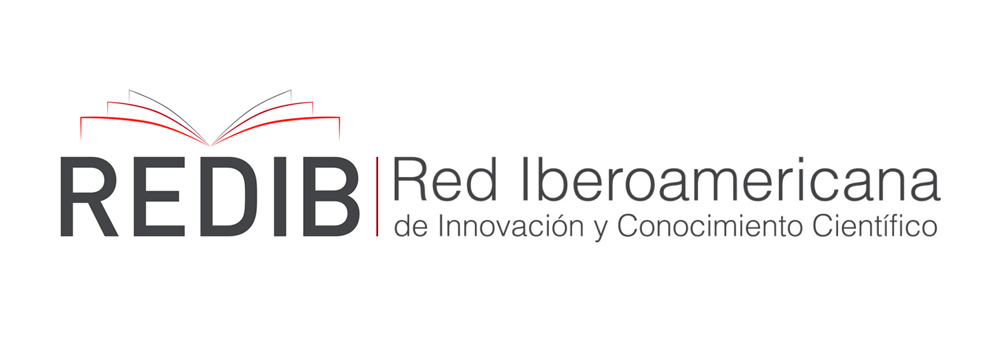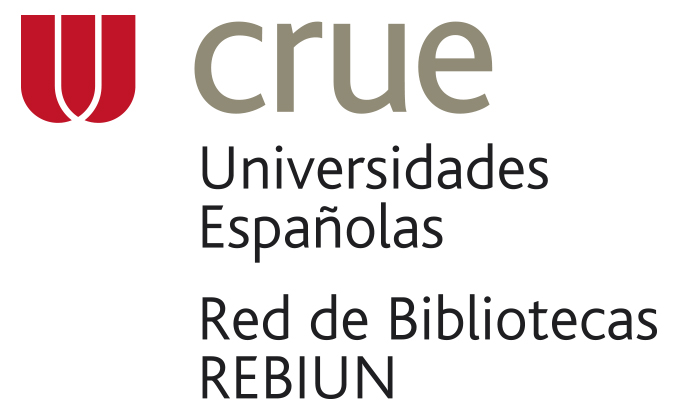Educação científica na educação infantil mediada por tecnologias: uma revisão sistemática
DOI:
https://doi.org/10.35622/j.rie.2023.03.003Palavras-chave:
educação infantil, educação científica, tecnologia educativa, revisão sistemáticaResumo
RESUMO: Introdução: O desenvolvimento de competências científicas na educação infantil permite a compreensão do mundo que envolve a criança, historicamente tem sido feito a partir da exploração do ambiente, no entanto, a utilização de tecnologias é uma necessidade actual nos processos de aprendizagem, melhoria contínua e contextualização da prática pedagógica na educação infantil. Objectivo: identificar tendências na formação em competências científicas na educação infantil, centrando-se em estratégias pedagógicas e recursos didácticos mediados pela tecnologia educativa. Metodologia: a revisão baseou-se numa abordagem qualitativa, foi efectuada uma pesquisa na base de dados SCOPUS que caracteriza o título do artigo, resumo e palavras-chave, com os seguintes critérios de pesquisa: educação E a primeira infância E a ciência E a educação E a tecnologia educativa, aplicando o filtro Tipo de fonte: Revista no período entre 2007 e 2022 para uma análise hermenêutica subsequente, tendo em conta as categorias de estratégias pedagógicas e de recursos didácticos. Resultados: verificou-se que existe uma forte tendência para utilizar os modelos Ciência, Tecnologia, Engenharia e Matemática -STEM; no caso dos recursos didácticos, destaca-se na literatura revista a utilização de robôs, aplicações educativas online e interactivas, websites, a utilização de dispositivos móveis e software para uso táctil e equipamento informático. Conclusões: Este estudo salienta que é importante ter em conta as limitações tecnológicas, pedagógicas e de conteúdo ao implementar estratégias de ensino na educação infantil, uma vez que estas limitações podem afectar o sucesso das práticas educativas e a capacidade dos professores para ensinar eficazmente as competências científicas.
Referências
Aladé, F., Lauricella, A. R., Beaudoin-Ryan, L., & Wartella, E. (2016). Measuring with Murray: Touchscreen technology and preschoolers’ STEM learning. Computers in Human Behavior, 62. https://doi.org/10.1016/j.chb.2016.03.080
Bagiati, A., & Evangelou, D. (2015). Engineering curriculum in the preschool classroom: the teacher’s experience. European Early Childhood Education Research Journal, 23(1). https://doi.org/10.1080/1350293X.2014.991099
Bers, M. U. (2007). Project InterActions: A Multigenerational Robotic Learning Environment. Journal of Science Education and Technology, 16(6), 537–552. https://doi.org/10.1007/s10956-007-9074-2
Cabello, V. M., Martinez, M. L., Armijo, S., & Maldonado, L. (2021). Promoting STEAM learning in the early years: “Pequeños Científicos” Program. LUMAT: International Journal on Math, Science and Technology Education, 9(2). https://doi.org/10.31129/lumat.9.2.1401
CEPAL. (2020). Universalizar el acceso a las tecnologías digitales para enfrentar los efectos del COVID-19. https://cutt.ly/LwuHbG4V
CEPALSTAT. (2023, January 13). Porcentaje de hogares que tienen acceso a Internet. CEPALSTAT. Base de Datos y Publicaciones Estadísticas. https://statistics.cepal.org/portal/cepalstat/dashboard.html?theme=1&lang=es
Çetin, M., & Demircan, H. Ö. (2020). Empowering technology and engineering for STEM education through programming robots: a systematic literature review. Early Child Development and Care, 190 (9). https://doi.org/10.1080/03004430.2018.1534844
Creswell, J., & Poth, C. (2016). Qualitative inquiry & research design. Choosing Among Five Approaches. SAGE Publications.
Dorouka, P., Papadakis, S., & Kalogiannakis, M. (2021). Nanotechnology and mobile learning: Perspectives and opportunities in young children’s education. International Journal of Technology Enhanced Learning, 13(3). https://doi.org/10.1504/IJTEL.2021.115975
Espigares-Gámez, M. J., Fernández-Oliveras, A., & Oliveras, M. L. (2020). Games as STEAM learning enhancers. Application of traditional Jamaican games in Early Childhood and Primary Intercultural Education. Acta Scientiae, 22(4). https://doi.org/10.17648/ACTA.SCIENTIAE.6019
Fleer, M. (2021). Re-imagining play spaces in early childhood education: Supporting girls’ motive orientation to STEM in times of COVID-19. Journal of Early Childhood Research, 19(1). https://doi.org/10.1177/1476718X20969848
Gerde, H. K., Pikus, A. E., Lee, K. S., Van Egeren, L. A., & Quon Huber, M. S. (2021). Head Start children’s science experiences in the home and community. Early Childhood Research Quarterly, 54. https://doi.org/10.1016/j.ecresq.2020.09.004
Haas, B., Lavicza, Z., Houghton, T., & Kreis, Y. (2022). Evaluating Technology-Enhanced, STEAM-Based Remote Teaching With Parental Support in Luxembourgish Early Childhood Education. Frontiers in Education, 7. https://doi.org/10.3389/feduc.2022.872479
Habeeb, K. M., & Ebrahim, A. H. (2019). Impact of e-portfolios on teacher assessment and student performance on learning science concepts in kindergarten. Education and Information Technologies, 24(2). https://doi.org/10.1007/s10639-018-9846-8
Hernández, R., & Mendoza, C. (2018). Metodología de la investigación. Mc Graw Hill.
Hirsh-Pasek, K., Zosh, J. M., Golinkoff, R. M., Gray, J. H., Robb, M. B., & Kaufman, J. (2015). Putting Education in “Educational” Apps: Lessons From the Science of Learning. Psychological Science in the Public Interest, Supplement, 16(1). https://doi.org/10.1177/1529100615569721
Jamali, S. M., Ale Ebrahim, N., & Jamali, F. (2022). The role of STEM Education in improving the quality of education: a bibliometric study. International Journal of Technology and Design Education. 33, 819–840. https://doi.org/10.1007/s10798-022-09762-1
Jung, S. E., & Won, E. S. (2018). Systematic review of research trends in robotics education for young children. Sustainability, 10 (4). https://doi.org/10.3390/su10040905
Kardefelt-Winther, D. (2017). How does the time children spend using digital technology impact their mental well-being, social relationships and physical activity? An evidence-focused literature review. https://cutt.ly/xwuHb0CE
Keengwe, J., & Onchwari, G. (2009). Technology and early childhood education: A technology integration professional development model for practicing teachers. Early Childhood Education Journal, 37(3). https://doi.org/10.1007/s10643-009-0341-0
Kewalramani, S., & Veresov, N. (2022). Multimodal Creative Inquiry: Theorising a New Approach for Children’s Science Meaning-Making in Early Childhood Education. Research in Science Education, 52(3). https://doi.org/10.1007/s11165-021-10029-3
Kim, H. J., & Song, M. S. (2017). Development of a teaching model for STEAM using R-learning educational robot to promote young children’s creative problem solving ability. Advanced Science Letters, 23(10). https://doi.org/10.1166/asl.2017.10471
Levy, S. T., & Mioduser, D. (2008). Does it “want” or “was it programmed to...”? Kindergarten children’s explanations of an autonomous robot’s adaptive functioning. International Journal of Technology and Design Education, 18(4). https://doi.org/10.1007/s10798-007-9032-6
López, L. S., & Cabello, V. M. (2022). Starting at Home: What Does the Literature Indicate about Parental Involvement in Early Childhood STEM Education? In Education Sciences (Vol. 12, Issue 3). https://doi.org/10.3390/educsci12030218
MacDonald, A., Danaia, L., Sikder, S., & Huser, C. (2021). Early Childhood Educators’ Beliefs and Confidence Regarding STEM Education. International Journal of Early Childhood, 53(3). https://doi.org/10.1007/s13158-021-00295-7
Macedo, B. (2016). Educación científica. Repositorio MINEDU.
Macgregor-Ferrera, A. F. (2018). La importancia de enseñar ciencia en preescolar. I.C. Investig@cción Revista Electrónica Multidisciplinaria de Investigación y Docenci, 15, 84–91. https://revistaic.instcamp.edu.mx/volumenes/volumen15#revista15-7
Mertala, P. (2017). Wag the dog – The nature and foundations of preschool educators’ positive ICT pedagogical beliefs. Computers in Human Behavior, 69. https://doi.org/10.1016/j.chb.2016.12.037
Ng, A., Kewalramani, S., & Kidman, G. (2022). Integrating and navigating STEAM (inSTEAM) in early childhood education: An integrative review and inSTEAM conceptual framework. Eurasia Journal of Mathematics, Science and Technology Education, 18(7). https://doi.org/10.29333/ejmste/12174
Page, M. J., McKenzie, J. E., Bossuyt, P. M., Boutron, I., Hoffmann, T. C., Mulrow, C. D., Shamseer, L., Tetzlaff, J. M., Akl, E. A., Brennan, S. E., Chou, R., Glanville, J., Grimshaw, J. M., Hróbjartsson, A., Lalu, M. M., Li, T., Loder, E. W., Mayo-Wilson, E., McDonald, S., … Alonso-Fernández, S. (2021). Declaración PRISMA 2020: una guía actualizada para la publicación de revisiones sistemáticas. Revista Española de Cardiología, 74(9). https://doi.org/10.1016/j.recesp.2021.06.016
Parette, H. P., Hourcade, J. J., Dinelli, J. M., & Boeckmann, N. M. (2009). Using clicker 5 to enhance emergent literacy in young learners. Early Childhood Education Journal, 36(4). https://doi.org/10.1007/s10643-008-0288-6
Preradović, N. M., Lešin, G., & Boras, D. (2017). The role and attitudes of kindergarten educators in ICT-supported early childhood education. TEM Journal, 6(1). https://doi.org/10.18421/TEM61-24
Prtljaga, P., & Savić, Z. (2017). The Use of the Internet Sources in the Professional Development of Preschool Teachers. Croatian Journal of Education, 19(2).
Rahiem, M. D. H. (2021). Storytelling in early childhood education: Time to go digital. International Journal of Child Care and Education Policy, 15(1). https://doi.org/10.1186/s40723-021-00081-x
Stephenson, T., Fleer, M., Fragkiadaki, G., & Rai, P. (2022). “You Can be Whatever You Want to be!”: Transforming Teacher Practices to Support Girls’ STEM Engagement. Early Childhood Education Journal, 50(8). https://doi.org/10.1007/s10643-021-01262-6
Sullivan, A., & Bers, M. U. (2019). Investigating the use of robotics to increase girls’ interest in engineering during early elementary school. International Journal of Technology and Design Education, 29(5). https://doi.org/10.1007/s10798-018-9483-y
Tanaka, F., Cicourel, A., & Movellan, J. R. (2007). Socialization between toddlers and robots at an early childhood education center. Proceedings of the National Academy of Sciences of the United States of America, 104(46). https://doi.org/10.1073/pnas.0707769104
Toma, R. B., & García-Carmona, A. (2021). «De STEM nos gusta todo menos STEM». Análisis crítico de una tendencia educativa de moda. Enseñanza de Las Ciencias. Revista de Investigación y Experiencias Didácticas, 39(1), 65–80. https://doi.org/10.5565/rev/ensciencias.3093
Wang, F., Kinzie, M. B., McGuire, P., & Pan, E. (2010). Applying technology to inquiry-based learning in early childhood education. Early Childhood Education Journal, 37(5). https://doi.org/10.1007/s10643-009-0364-6
Wu, J. F. (2019). Research on picturebooks: A comparative study of Asia and the World. Malaysian Journal of Library and Information Science, 24(2). https://doi.org/10.22452/mjlis.vol24no2.5
Publicado
Edição
Seção
Licença
Copyright (c) 2023 Felipe Pino-Perdomo

Este trabalho está licenciado sob uma licença Creative Commons Attribution 4.0 International License.



























